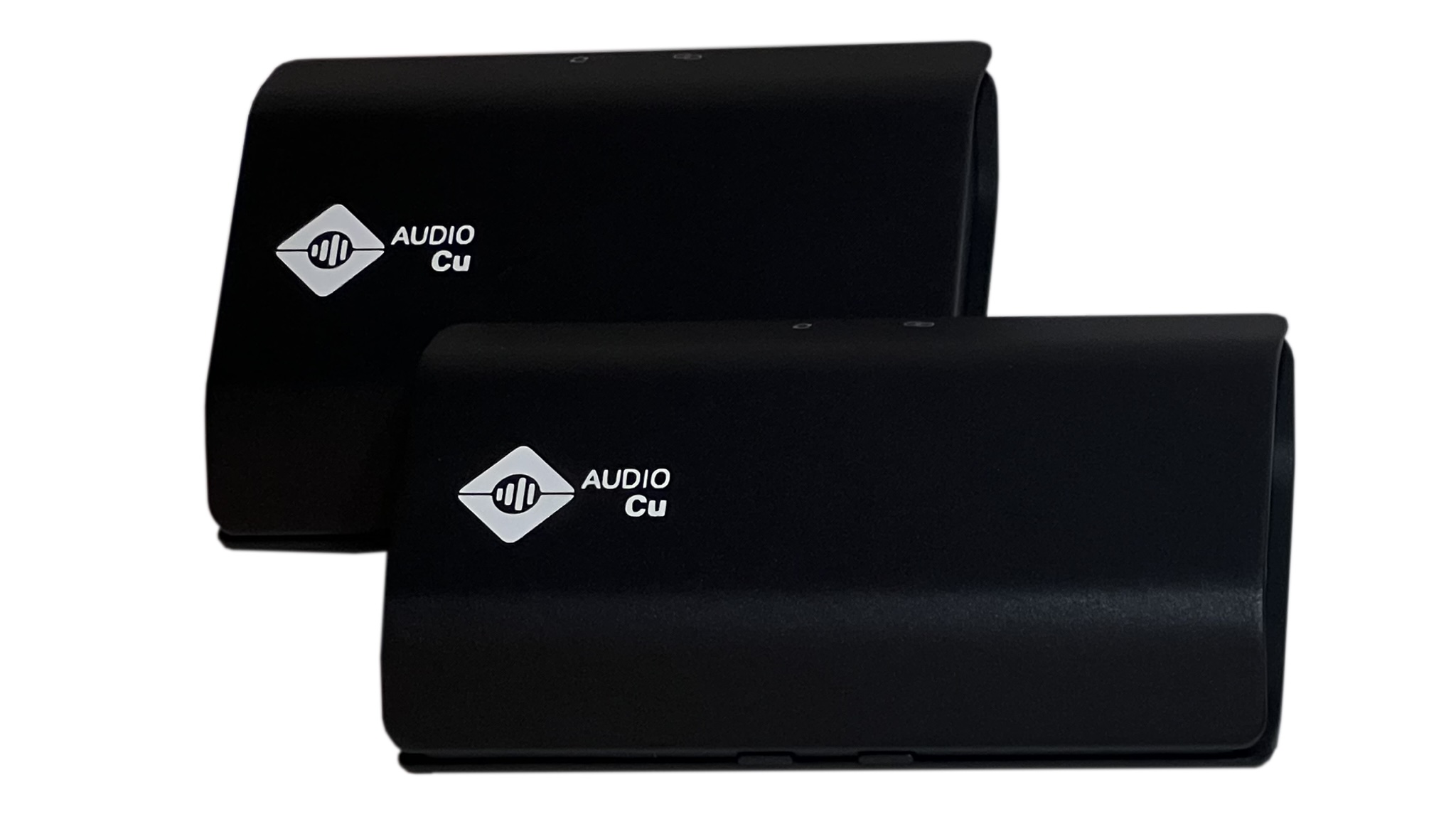
There are many terrible things in this world, and I think we can all agree that running speaker cables is one of the worst. That’s one of the reasons why the best soundbars now have wireless subwoofers and sometimes wireless surround speakers too, but many of those options are manufacturer-specific and some wireless connections are laggy or lossy.
US firm Fasetto thinks it has a better option: Dolby Atmos via your home’s power lines. Its Audio Cu system delivers audio without lengthy cabling, and it’s just been certified for Dolby Atmos.
Audio Cu works in much the same way as powerline networking devices do: it sends signals over the in-wall wiring in your home. Audio signals are sent from a transmitter attached to your TV or AV receiver, decoded by boxes that receive the signals, and then sent to your speakers as normal. The system supports surround sound setups up to 7.1.2 with Dolby Atmos and should work with any speakers with the familiar black and red wiring terminals.
That’s the good news. Now for the potentially not-so-good.
How much does wireless surround sound cost?
We don’t know the price yet, but it isn’t likely to be cheap. We know that you’ll need an Audio Cu receiver for each speaker as well as the main Audio Cu transmitter you’ll attach to one of the best TVs or an audio source; each receiver will need to be its own amplifier as well as a receiver, and of course that ups the cost somewhat. As the technology is largely the same as powerline networking, a look at the best powerline adapters gives some indication of what the prices will be at a minimum.
Is it worth it? According to the firm, latency is down to less than 20 milliseconds, there’s virtually no packet loss, and the signals are not affected by interference, which can be an issue with over-the-air wireless connections. A single transmitter can handle up to 10 channels of audio, and if you have a mansion you can run up to six transmitters in separate setups in the same home, with a max of 32 audio channels in total. You don’t need an AV receiver (though if you have one of the best 4K projectors, you may well be using one anyway), and all the EQ and configuration is done in the iOS or Android app. You’ll also be able to control the volume via your TV or projector.
According to Fasetto, “The future of home audio connectivity has arrived with AUDIO Cu” and the firm is “the only company that has overcome all the obstacles of moving data cleanly over power lines in all environments”. If the system is as good as it sounds, it could be an interesting option for people who want a home theater setup without installing cables or running them across the floor. You can find out more on the Fasetto website.




















+ There are no comments
Add yours